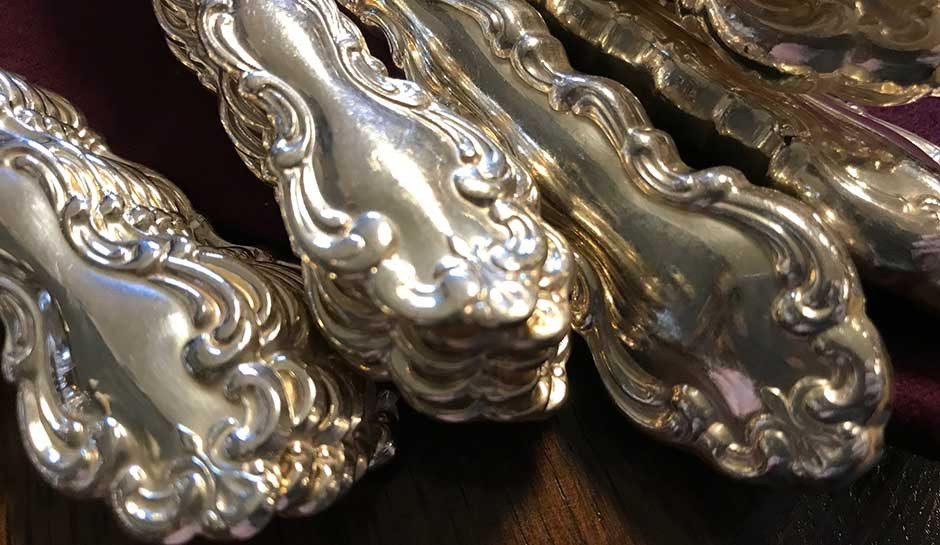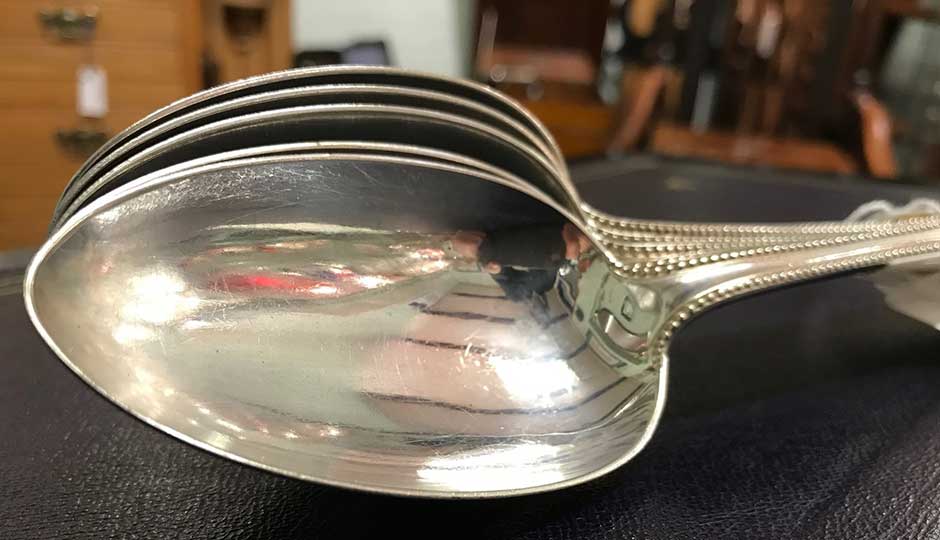
Antique silver is one of the most versatile and glamorous of all precious metals. From teapots to trinkets, antique silver candlesticks to antique silver cutlery, these gleaming pieces combine strength and intricate design to create objects of real beauty. Yet despite their opulence, many silver antiques can be bought for bargain prices.
What is antique silver worth?
The great tragedy of silver is that it’s been considered recyclable for centuries, meaning brilliant pieces have been melted down to finance wars or simply forged into something more in vogue at the time. Antique silver has long been valued according to the weight of the item (for example, £40 an ounce for antique silver teapots). Scrap now only fetches about £2 per ounce, compared to £20 about 40 years back. Prices, of course, depend on who buys antique silverware and the desirability of the object at hand.
You’ll find day-to-day items such as antique silver cutlery in abundance when trawling antiques shops and centres. Items such as antique silver spoons were made in huge quantities during the Victorian period - a time when the growing middle classes were showing off their new-found wealth. This mass-production meant that a rise in silver lookalikes occured, made from Old Sheffield plate. Prices (along with quality) dropped dramatically.
So, how much are antique silver spoons, for example, worth today? They’re actually a smart starting point for a budget collection - you can sell an pair of ‘berry’ spoons with a fiddle-and-thread pattern from 1832 for as much as £100. Complete canteens of antique silver cutlery are hard to come by, but some 19th-century sets do sometimes come up for sale. A 12-place set can go for between £2,000 and £5,000 at auction, but you can always create your own canteen by buying single antique silver spoons, knives and forks for around £10-£20 per item.

While it’s impossible to predict the future of silver antiques in terms of what will thrive and what will not, Paul Storr and Colin McKenzie are two prominent figures that can only continue to bloom in desirability. Both top masters of their craft, they set record sales in the market and are the ultimate investment pieces.
How to identify antique silverware
There are certain things to look for when it comes to antique silver. The first is hallmarks - they can be a trap to the untrained eye. Hallmarks are naturally the first go-to for dating silver antiques, but they’re commonly forged. Later electroplate pieces were created to mimic silver (as we discuss below), many with fake hallmarks. Take note of the condition of the object. Is it rubbed or worn? Many silver antiques for sale will be - and this is a good indicator they’re the real deal.
Another factor to understand when looking at antique silver for sale is the difference between silver and silver plate. The latter is the lower-cost option, developed after 1720 when the Britannia standard silver hallmark became optional. Items were given the appearance of real silver with a thin coating of base metal - the first were fused or Old Sheffield plate. Silver is often blended with a base metal (usually copper) to make its soft nature more malleable. Most antique silver is of sterling standard (about 92.5% pure silver to 7.5% base metal).
Who buys antique silverware?
There are a lot of merchants who will try and take your antique silver from you for next to nothing, so the best place to sell it is with independent dealers. Get your items appraised by a professional at an antiques store. It might be tempting to give antique silver a clean to make it gleam, but this can actually lower the value of your pieces and potentially damage it. You don’t always have to go with the first buyer - ask around and see who will offer the best price. Scrap silver can be sold at pawn shops, but you won’t get a good price for say, antique silver boxes, frames, or other articles at these places.
Where to sell antique silverware
There’s plenty of antique silver for sale up and down the country. Auctions are good places to flog a lucky find, or if you’re a dealer, you can reach more collectors by selling your silver antiques in an antique centre. Hemswell Antique Centre is the largest in Europe, with antique enthusiasts visiting our four brilliant buildings and their surroundings all week long. From gleaming silver bowls to antique silver candlesticks, the pieces in our range of antique silver for sale are a pleasure to collect, both for their beauty and for the pleasure of using them.